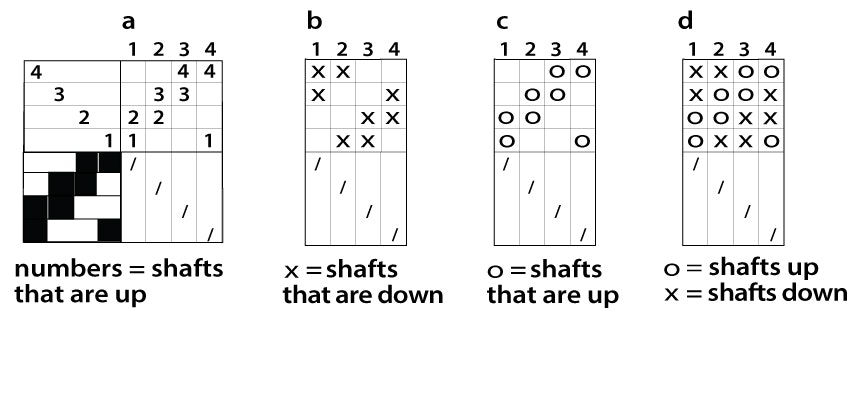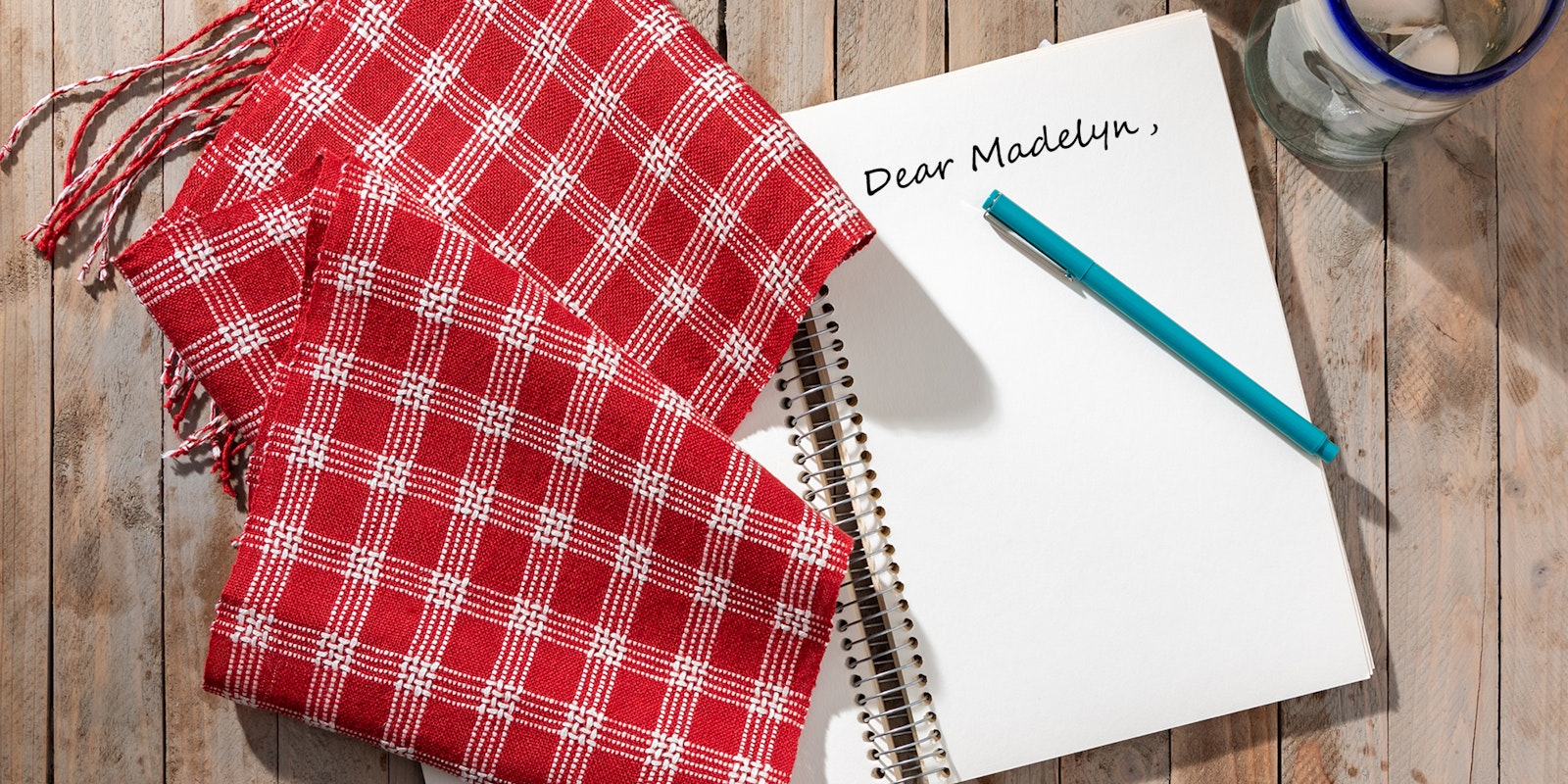Hi Madelyn!
One of the frustrations of weaving is figuring out the tie-up notation. Some tie-ups have filled-in boxes, some have x’s, and some have o’s. It’s always a guess as to which shafts need to rise, and it would be nice to guess right the first time! What if the notation used an R to denote a rising shaft, or if the draft added a key to what the tie-up symbols mean? That way you’d only need to know which kind of loom you are using, and you’d be raising the right shafts.
Thank you,
~Judy
Hi Judy!
You are not the first weaver to have discovered the problem with tie-up symbols! Many new weavers use drafts from Marguerite Davison’s A Handweaver’s Pattern Book for their first projects. The tie-up symbols in that book show x’s. That is because when it was written, the jack loom (on which shafts rise) did not exist. Most weavers had counterbalance looms (some had countermarch looms). On counterbalance looms, each shaft is connected to another shaft. The x symbol represents a tie to a shaft that goes down, but its connected shaft (blank in the tie-up) rises (see Tie-up b). Those who tied the x’s to rise for Davison’s drafts usually discovered that they were weaving the right fabric, but face down.

The treadles on a countermarch loom are tied to one of two lamms for each shaft, either the lamm that sinks the shaft or the lamm that raises it. In a countermarch tie-up, the x indicates a shaft that goes down, the o a shaft that goes up; each treadle is tied to a lamm for every shaft. Tie-up d shows a countermarch tie-up on four shafts.
When the jack loom, on which shafts only rise, was invented (in the 1930s), most texts began using the o symbol, recognized from countermarch tie-ups to indicate a shaft that is raised, as in Tie-up c. Later, especially when looms with more than four shafts were in use, numbers replaced the o’s. It is a lot easier to use an 8-shaft (or more) tie-up with numbers than it is to check which shaft each o (or R if we were to use that symbol) represents. Handwoven made the change from o’s to numbers in 1999.
The only kind of tie-up that might present a mystery is one with filled-in black squares. There are very few of these in texts, and if they were written before the jack loom became widely used, I’d assume they indicate sinking shafts---more recently, rising shafts. But almost all sources today use numbers, and numbers always represent rising shafts.
~Madelyn

